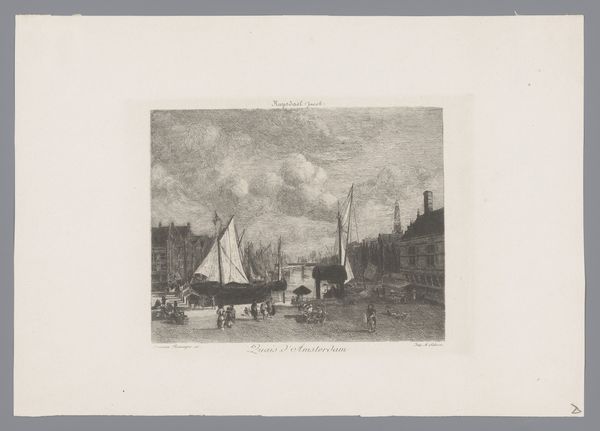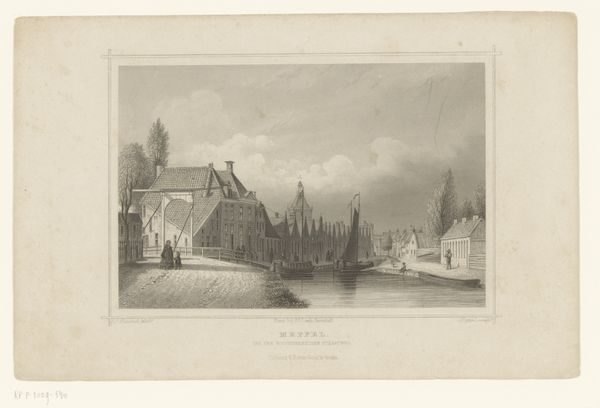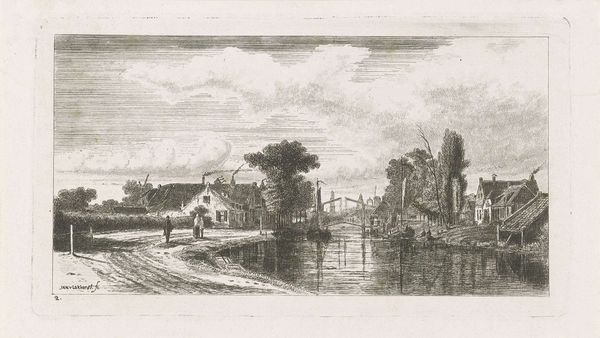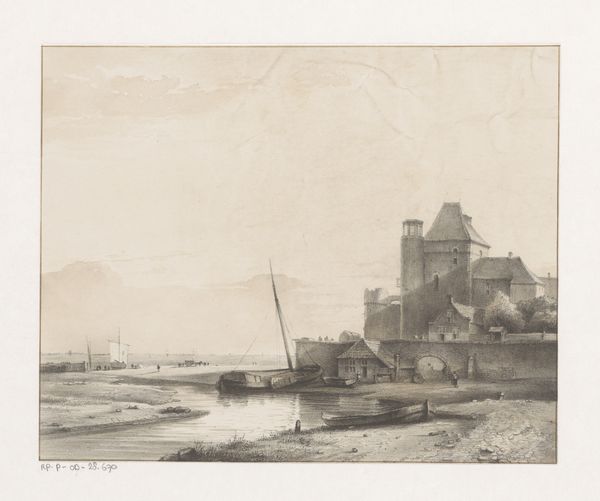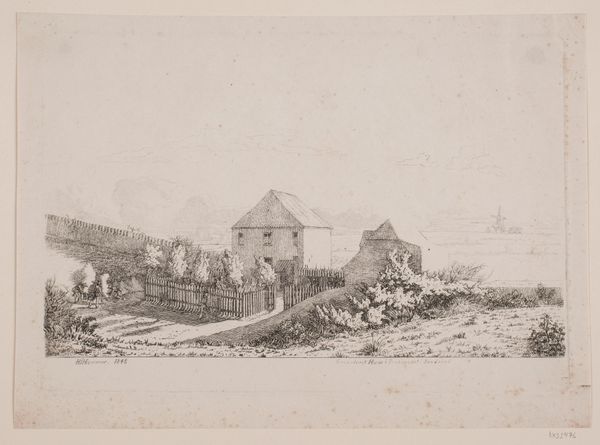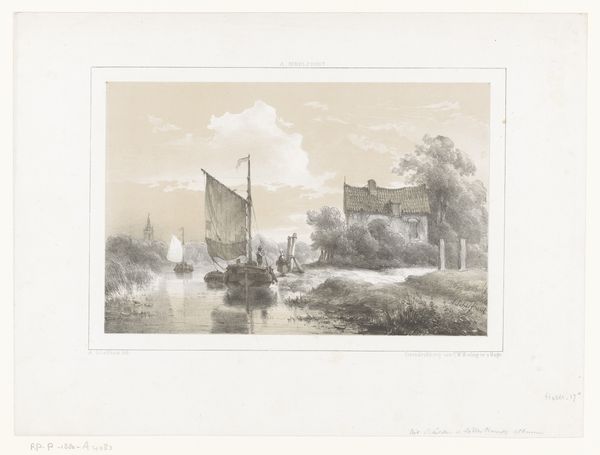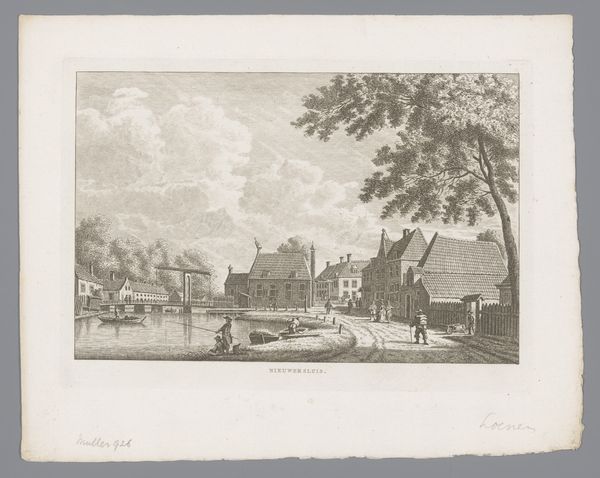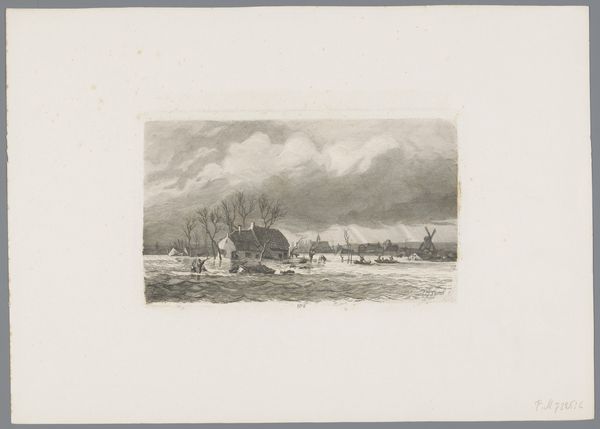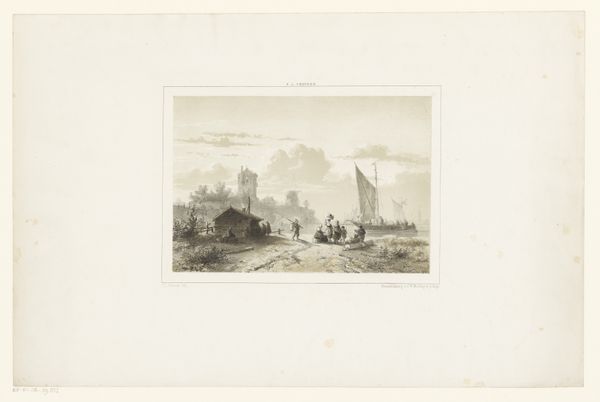
print, etching
#
dutch-golden-age
# print
#
etching
#
landscape
#
cityscape
#
realism
Dimensions: height 149 mm, width 213 mm
Copyright: Rijks Museum: Open Domain
Curator: This is Isaac Weissenbruch's "Strandgezicht met huizen aan het water en schepen", or "Beach View with Houses on the Water and Ships," etched sometime between 1836 and 1912. It’s currently held in the Rijksmuseum. Editor: It has a really tranquil feel to it. The composition is so simple, almost stark, but the etching is so detailed with its shading. What do you see in this piece that stands out, perhaps from a formalist point of view? Curator: The appeal, for me, lies in its tonal gradations and textural variations. Observe how Weissenbruch masterfully utilizes hatching and cross-hatching to articulate light and shadow. The dense network of lines describing the buildings contrasts markedly with the sparser, more fluid strokes depicting the sky and water, yes? This strategic juxtaposition is significant. Editor: Yes, definitely. So, is that what gives it that sense of depth, even though it's all essentially monochrome? Curator: Precisely! It's also about rhythm and balance. Notice how the verticality of the ship masts and buildings is counterpointed by the horizontal expanse of the beach and water. Semiotically speaking, the structural elements – lines, shapes, forms – generate meaning independent of any symbolic referents. Editor: Interesting! So, without knowing the history of the time, or the specifics of the buildings, it still conveys a feeling just through how it’s composed? Curator: Precisely. The internal relationships between these formal elements constitute its primary significance, devoid of relying heavily on external context. Consider, the lines evoke feeling, even without realistic application. What feelings are conjured by these arrangements? Editor: I guess I hadn't considered how the elements themselves created feeling and not just the context. Thanks, that's a new perspective! Curator: Indeed. A constant negotiation between observation and form. We must always reflect, and consider the intention to feel in the composition.
Comments
No comments
Be the first to comment and join the conversation on the ultimate creative platform.
